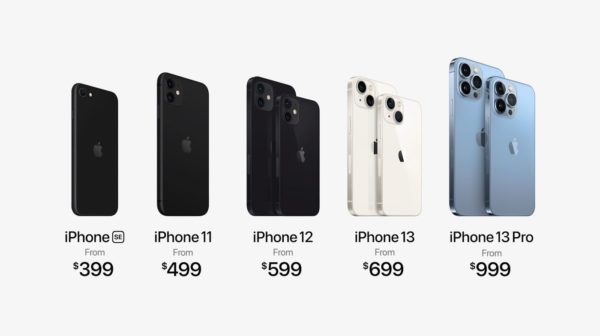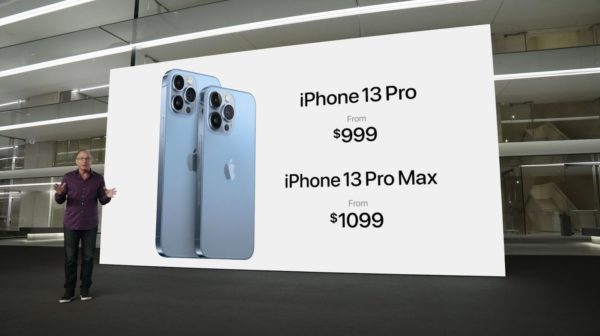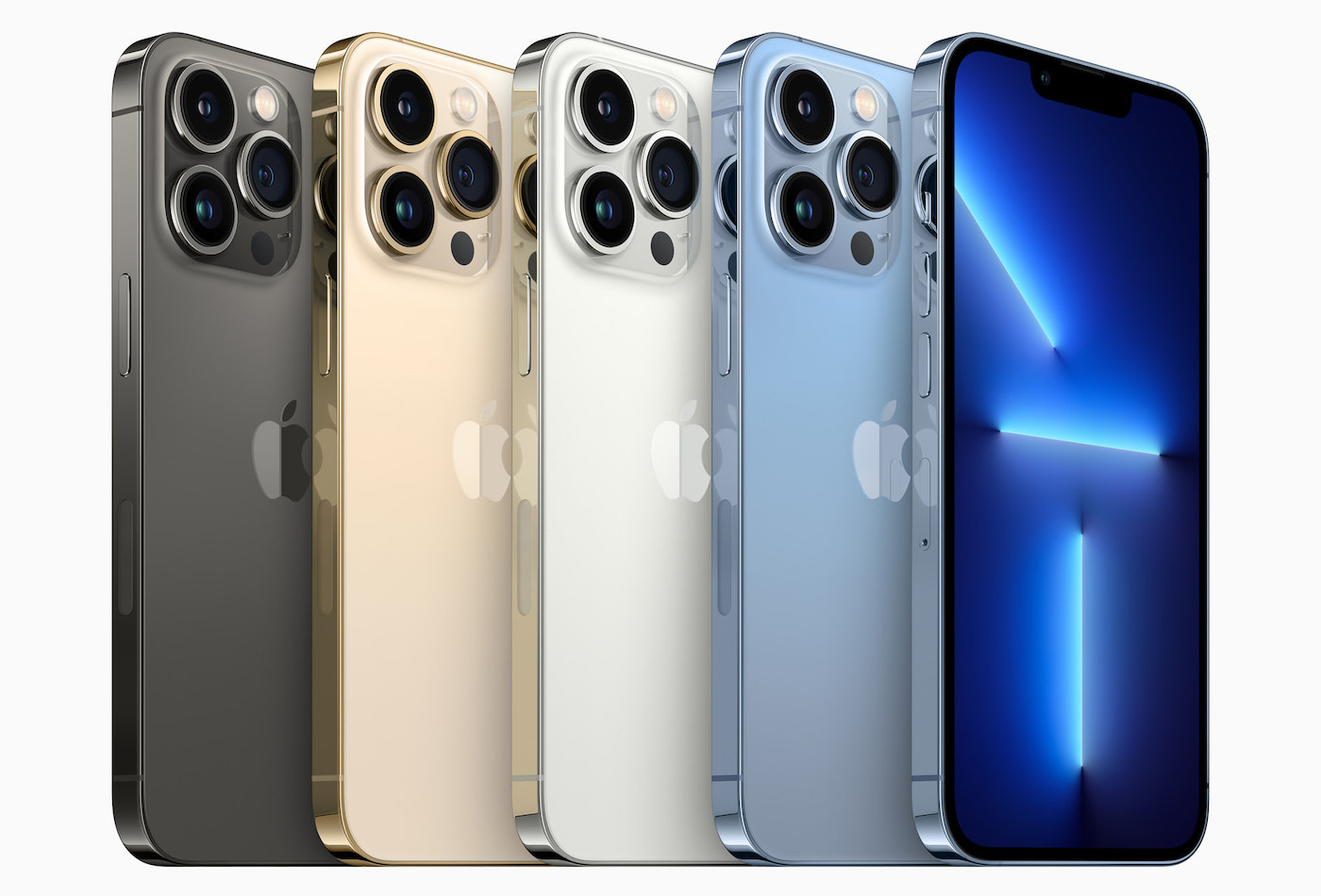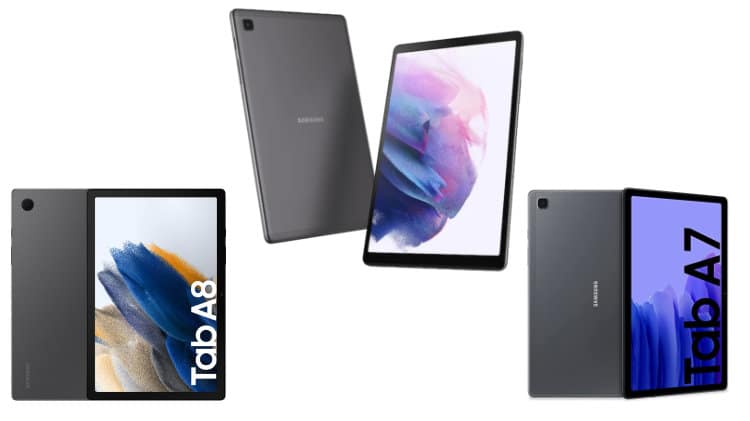[Keynote] iPhone 13 Pro: A15, small notch, 120 Hz display … and everything else for video
Make way for the iPhone 12s Pro, sorry, the iPhone 13 Pro. No big upheavals this year for the most “Pro” iPhone, except for a Face ID notch that’s finally more compact (but still there), and above all, very big advances in video functions (the first smartphone REALLY for videographers and director?). For the rest, not much … or so little.
No big design change for the iPhone 13 Pro. No big changes at all
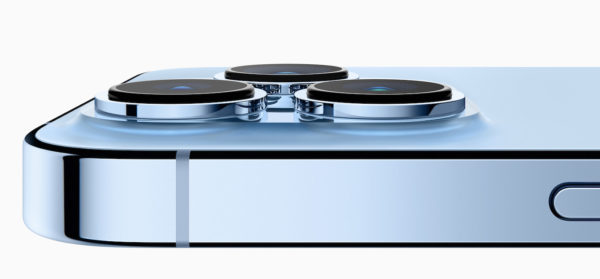
We start the tour of the day with the screen Super retina XDR ProMotion (phew!), obviously a marvel which has, FINALLY, the variable display frequency (from 10 Hz to 120 Hz); it’s already seen for a long time on Android, but Apple promises an intelligent adaptation of the frequency to the displayed contents. The brightness climbs to 1000 nits, which is enormous and will be mainly useful for use in full sun (panel finally visible in backlight). Finally, the TrueDepth notch is really more compact, although we still notice it. What does not change at all: the panel is 6.1 inches diagonally on the iPhone 13 Pro, and 6.7 inches on the Pro Max.
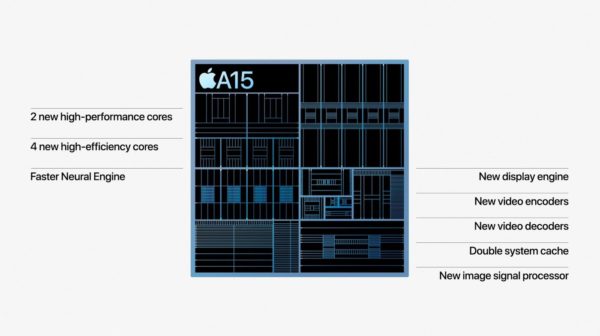
Perfs side, we take the same as for the iPhone 13 (not Pro), with an A15 that Apple announces much more efficient than competing processors, which is not necessarily the guarantee of a big leap forward. On the other hand, the A15 of the Pro model is entitled to 5 GPU cores, which would give it 50% more graphics rendering power than the most advanced competitive chips. Apple Arcade will take advantage of this. A 1TB storage option is also available (but it’s really overpriced).
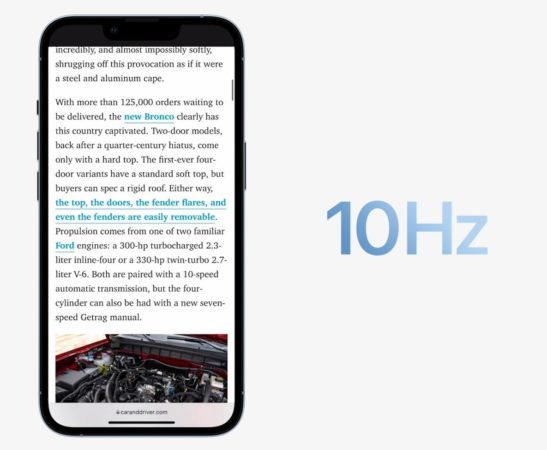
For the photo part, the changes are more obvious; In addition to the “Photographic Styles” (preprogrammed or customizable photo filters which we hope will also be available for other iPhones), it is the sensors that benefit from the biggest changes. Night mode is now available for each of the three sensors (thanks to a better opening on each sensor). In this regard, the photo unit still has a telephoto lens, an ultra wide angle and a wide angle. The Macro mode seems to offer very close shots and better yet, you can shoot in this mode, with the blur effect in the background (or foreground) in the mode. cinematography.
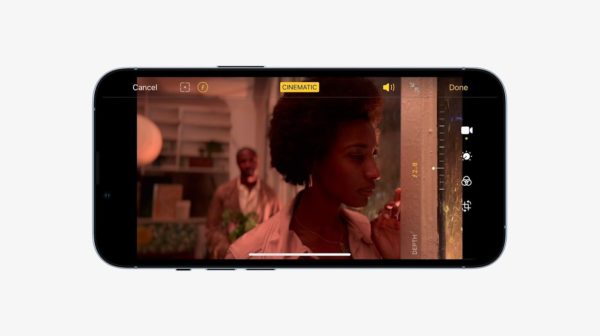
It is also possible to shoot in 4K at 30 frames per second in ProRes. The iPhone 13 Pro would also be the only smartphone to be able to film in ProRes 4K. The cinematography mode, really bluffing for the budding filmmakers (or the broke reals) seems to take full advantage of the evolutions of the sensors of the 13 Pro. The dynamic effects of change of focus, the blurs that pass in a second from the second to the foreground, all this is certainly really amazing (the short directed by Kathryn Bigelow testifies to it), but who will really benefit from it? Battery life improves a bit, i.e. 1.5 hours more on the iPhone 13 Pro compared to the iPhone 12 Pro, and 2.5 hours more for the iPhone 13 Pro Max compared to the iPhone 12 Pro Max.
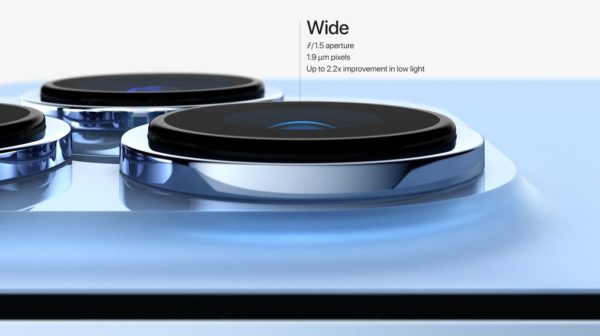
Finally, Apple is making tons about the almost absolute recyclability of its iPhone 13 Pro. Here again, we can only applaud, but the very “WTF” pricing policy will undoubtedly prevent these “green” efforts from being shared by as many consumers as possible.
And now the painful… the prices!
The iPhone 13 Pro starts at $ 999, and the iPhone 13 Pro Max starts at $ 1,099. The 1TB model reaches more than 1,700 euros, and we are only talking about the iPhone 13 Pro here. The iPhone 13 Pro and 13 Pro Max go on sale September 24.
